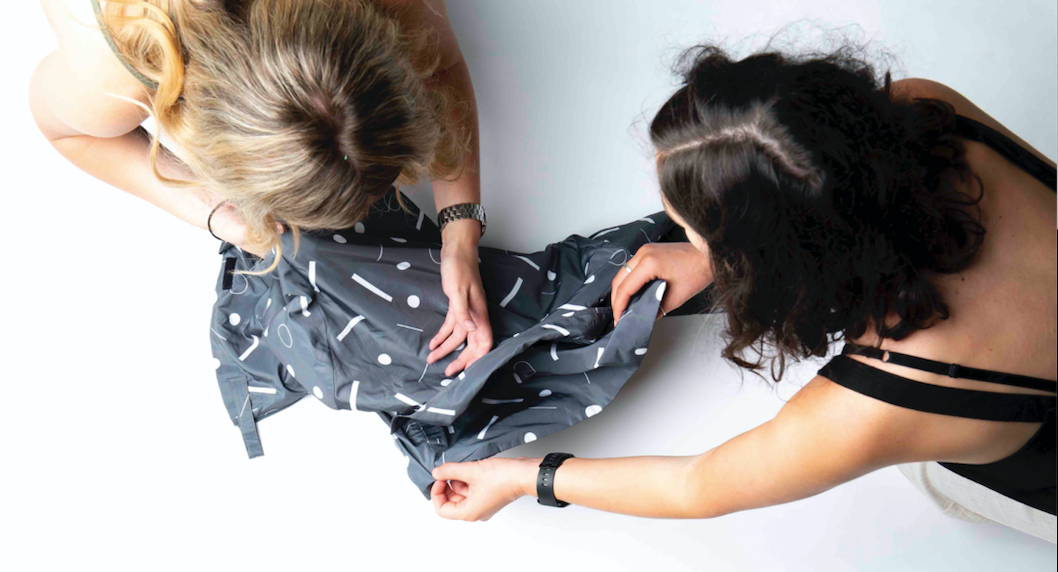As you probably know by now, JAM was founded by us, two Occupational Therapists and Disability Support Workers. It was actually during our work as Disability Support Workers that we really started to experience the difficulties our clients had with dressing and think about what solutions existed for them. Two of our frequent clients were Jack and Maddie, the inspiration and namesake for our brand JAM. During our time as Disability Support Workers, we would come together at University where we were both studying to become Occupational Therapists and discuss our shifts with Jack and Maddie. We soon realised that both of them (as well as so many of our other clients) were really struggling through the task of getting dressed and undressed each day.
When assisting our clients during our shifts, we found dressing to be time consuming, difficult, uncomfortable and often a really undignified process. We would often find ourselves apologising to our clients as we struggled to get a t-shirt over their heads, or coming up with make-shift solutions such as putting a hoodie on backwards like an apron when out and about to keep them warm.
Apart from the fact we both had these experiences whilst providing support work, we have also spoken to so many other support workers and people with Disability or their family members and carers who have recounted very similar stories. We don’t believe this needs to be such a difficult part of a shift, and we know that both you and the person you are providing support to would much rather spend your time doing more meaningful and enjoyable activities. We created an Adaptive Fashion brand so that the clothing itself would be so much easier for both the individual wearing it and anyone assisting. However we know there are a lot of other things that can be done to help make the task of dressing easier, quicker, more comfortable and dignified for everyone involved, so we thought we’d share our tips with you here!
1. Communication is key:
We believe the most important part of working with people with disability in general is communication, and this is even more critical when providing personal care assistance that may involve physical help. It is essential that as a support worker you are talking through everything you are doing or plan to do with your client. Simply saying “Okay it’s time to get dressed” is not enough. Especially for those that have vision impairments or limited communication or mobility, they may be unable to effectively communicate when they are feeling uncomfortable. An example of good communication could be, “Hey Maddie it’s time to get dressed, I’m just going to start by putting your left arm through the sleeve of your t-shirt.” It may seem simple but often talking through every action you’re doing doesn’t come naturally, so you need to be constantly mindful of your communication when working with anyone with disability.
2. Ask for consent:
Along a similar train of thought is asking for consent. Although sometimes the individual you are assisting may not be able to actively provide consent when asked, it is still an important consideration in the communication process. Asking if you are able to assist with dressing and put on or take off items of clothing is extremely important in allowing the person you are assisting to maintain their dignity and control. Helping someone with dressing can be a very personal task and should not be overlooked just because that individual may receive assistance everyday.
3. Promote independence and encourage participation:
As well as maintaining dignity and control, promoting independence is integral to creating a positive experience when providing support. Encouraging the person you are supporting to participate in as much of the dressing process as possible, creates a sense of dignity that they too are contributing to their personal care. Even if it’s as simple as getting them to position their foot in a way that helps get the shoe on, or holding onto the waist of the pants you’re pulling the legs up on, what may seem an insignificant contribution is actually including the individual with disability in a task they are often excluded from playing any part in.
4. Allow opportunities for choice and self-expression:
Similarly, picking outfits is often a part of getting dressed that the person who will actually be wearing the clothes is not included in. Outfits are chosen by the person assisting and their opinion on what they think looks good, or simply what might suit the weather that day. This is completely forgetting about the most important part of getting dressed (in our opinion), self expression. As we’ve discussed at length in several of our other blogs (such as, The Impact of Fashion and Why you should care about your client's dressing as an OT), wearing clothes serves more than just a practical purpose and so by dictating what another person wears is stripping them of this form of self expression. This was another strong motivator for us to make Adaptive Clothing that was equal parts functional and fashionable, as we understand that in the past, sometimes the only options that were functional or were comfortable for the person with disability weren’t a stylish outfit that reflected their personality.
5. Take your time and don’t rush:
Our last little tip for Disability Support Workers is to take your time, sometimes if the task at hand is uncomfortable or difficult you want to rush through it so it’s over and done with sooner. Whilst we create Adaptive pieces to make the task of dressing quicker, trying to rush through the activity can just cause more issues and make yourself and the person you’re assisting more flustered and uncomfortable. If you incorporate all of the tips we’ve suggested whilst taking your time, we can guarantee that assisting an individual with disability to get dressed will no longer be the most dreaded part of your shift as a support worker.


